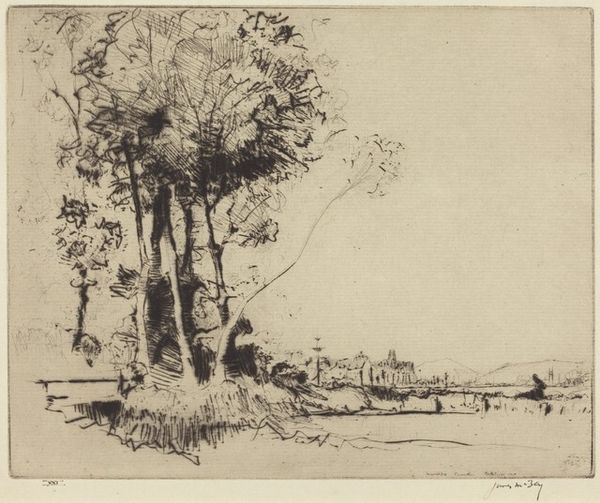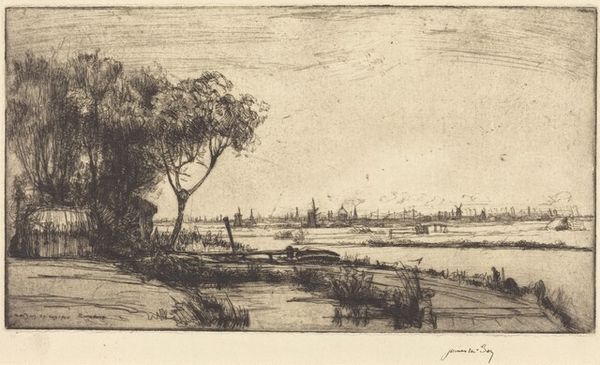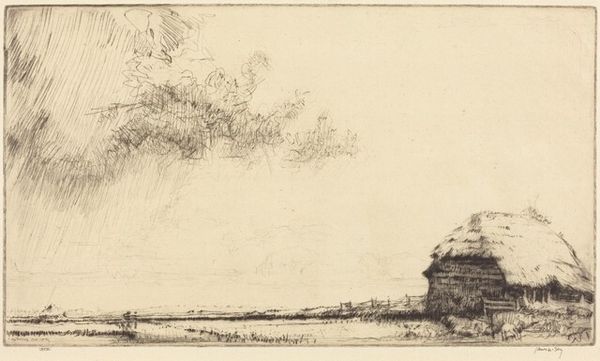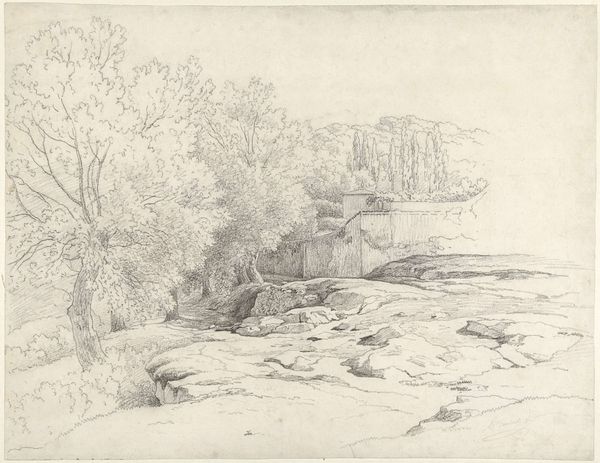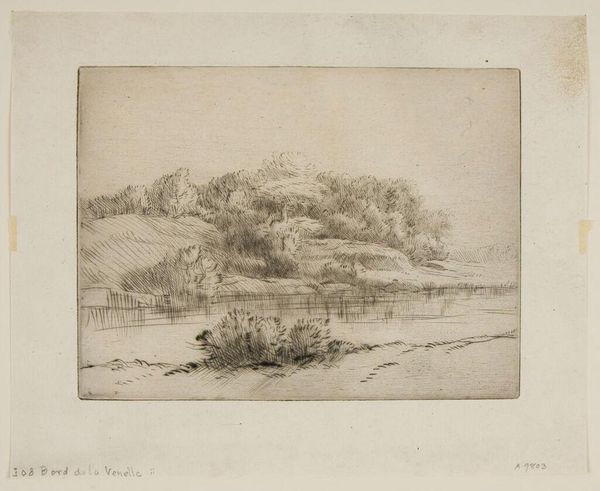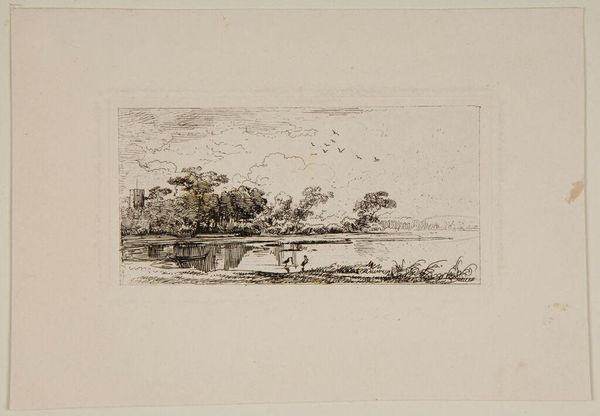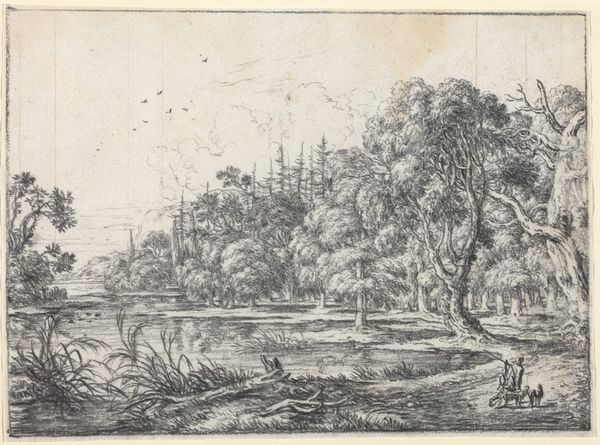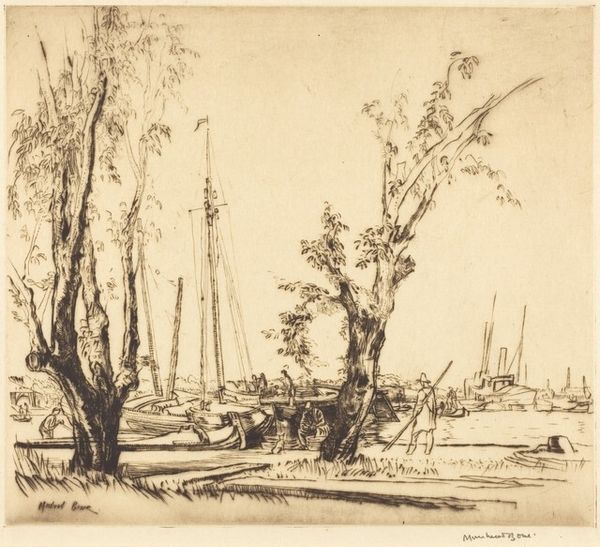
Copyright: National Gallery of Art: CC0 1.0
Editor: This is James McBey's "Old Machar Towers, No. 2," an etching from 1911. It's quite delicate, almost ghostly, with the reflections in the water. What stands out to you? Curator: What fascinates me here is the labor and material processes that underpin what might initially appear as a simple landscape. McBey chose etching, a process of physically impressing an image onto a metal plate, repeatedly passing it through a press. It's a testament to the democratized printmaking market flourishing in the early 20th century. Editor: Democratized? Curator: Exactly. Prints like these were relatively affordable, widening the art market beyond wealthy patrons. Consider the cost and time involved. Each print is a direct record of McBey's hand – his labor etched into the metal. Note how he hasn't obscured that process: the marks, the plate tone. What do those visible marks suggest to you about the artist's intentions? Editor: Perhaps he's not trying to hide the 'work' of art, the physical creation. Instead, it is about highlighting that material transformation? Curator: Precisely. He is acknowledging both the artistry *and* the industrialization of art. How do you think the consumption of art was evolving during this period? Editor: So, the rise of printmaking made art accessible, and also reveals something fundamental about production and value...it’s quite fascinating. Curator: Indeed, understanding the materiality offers a powerful lens.
Comments
No comments
Be the first to comment and join the conversation on the ultimate creative platform.


